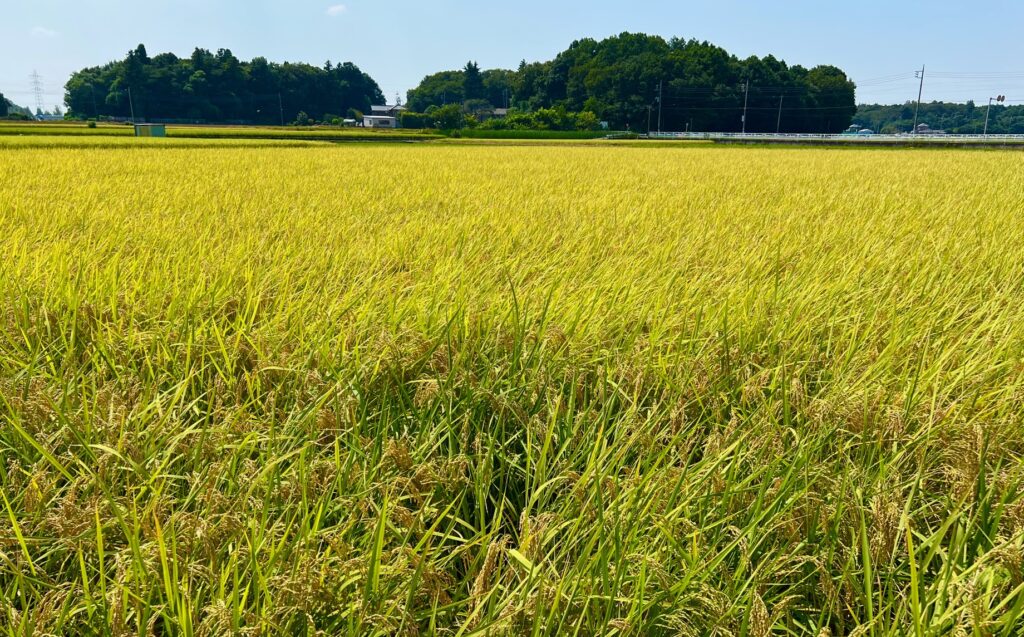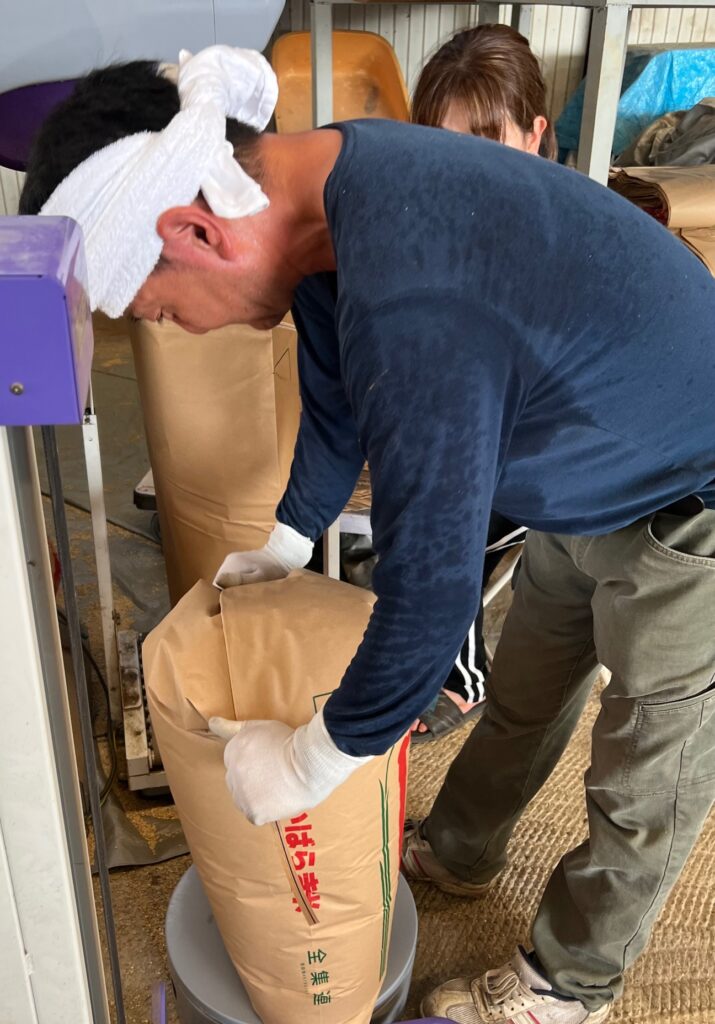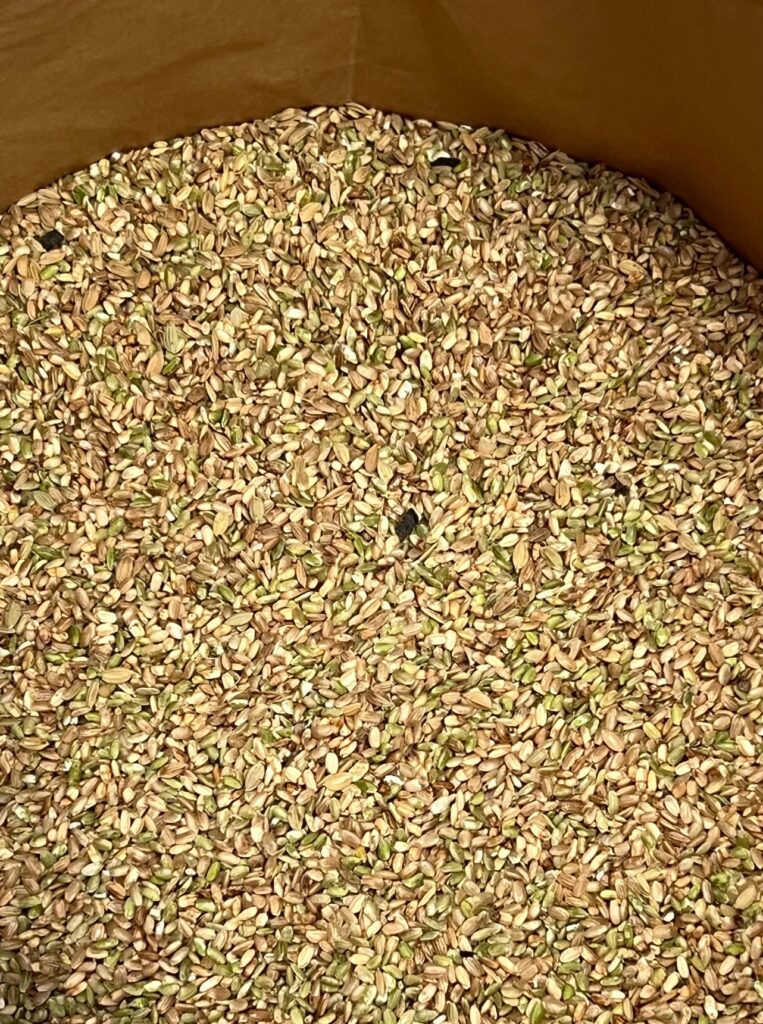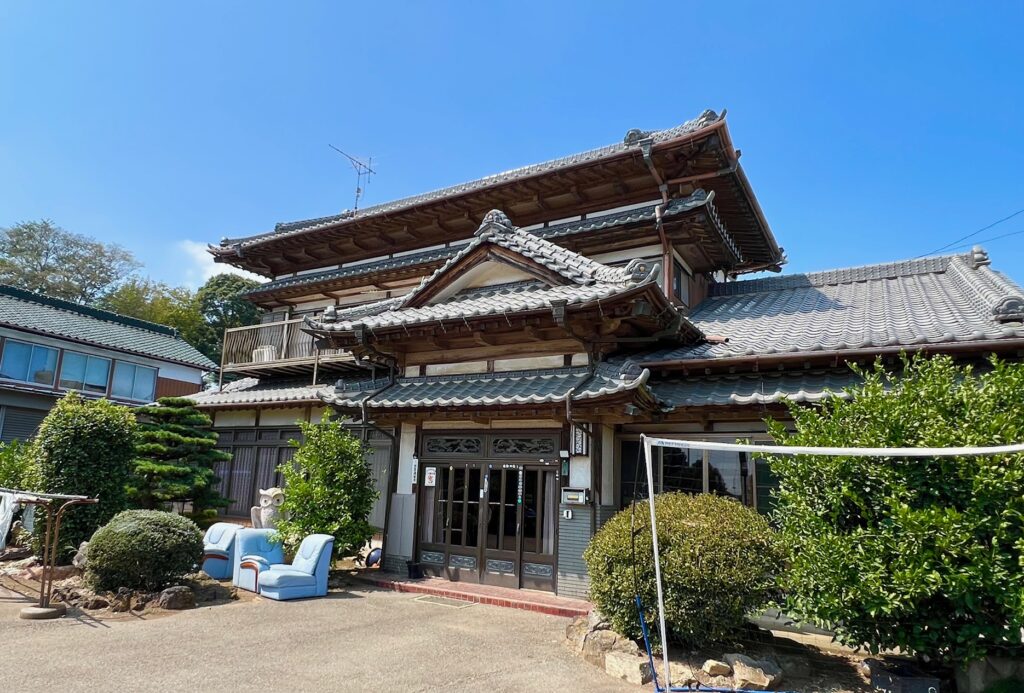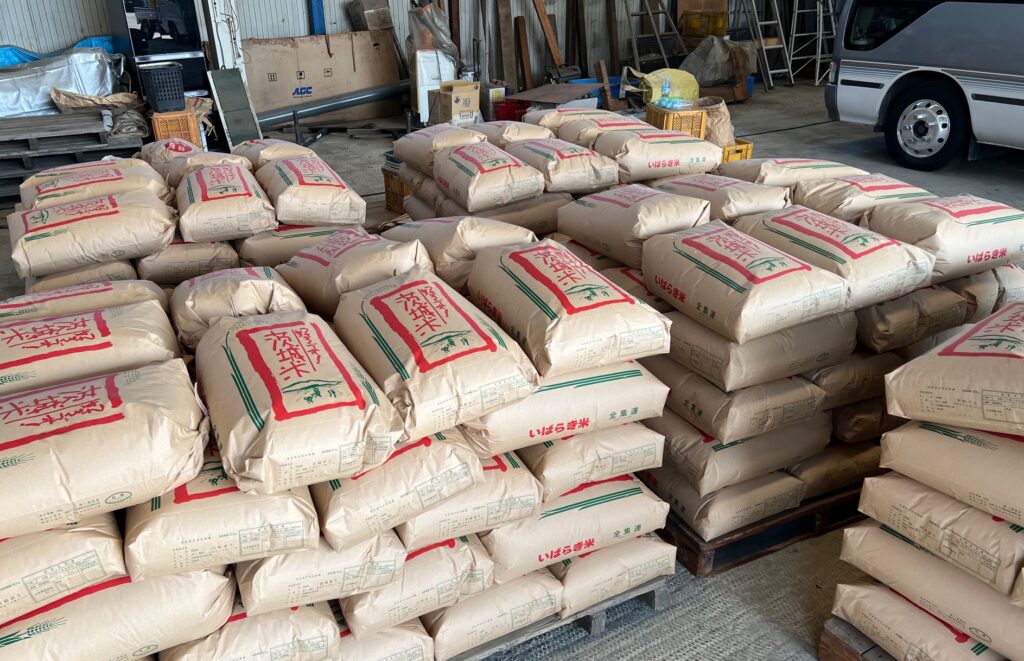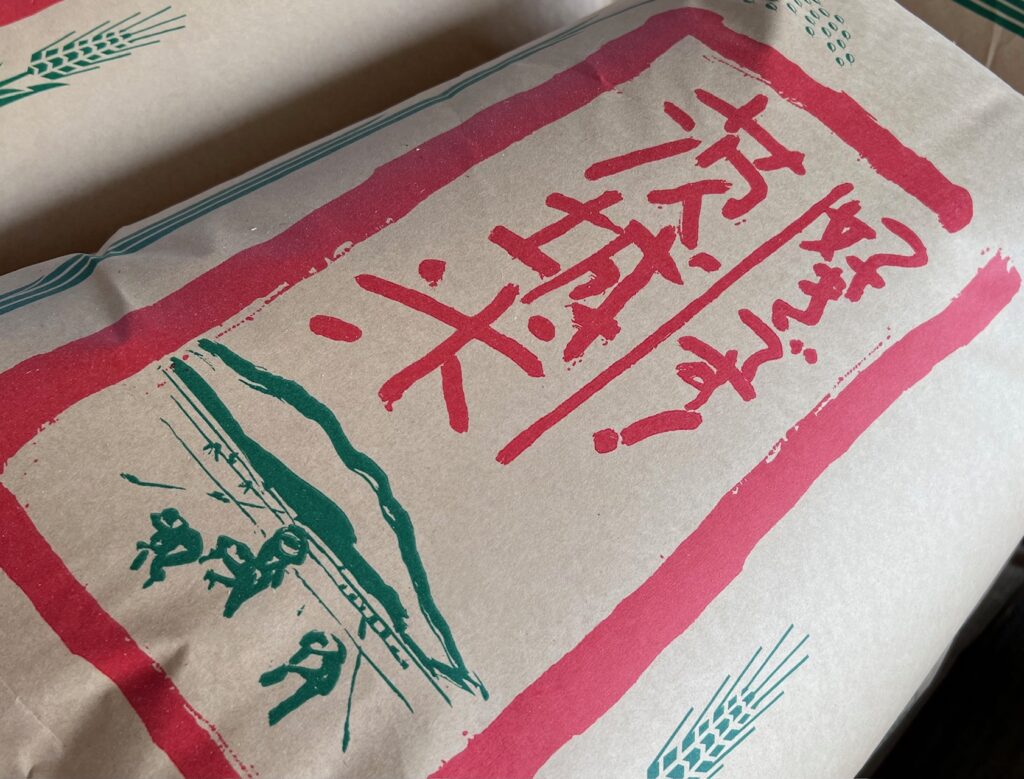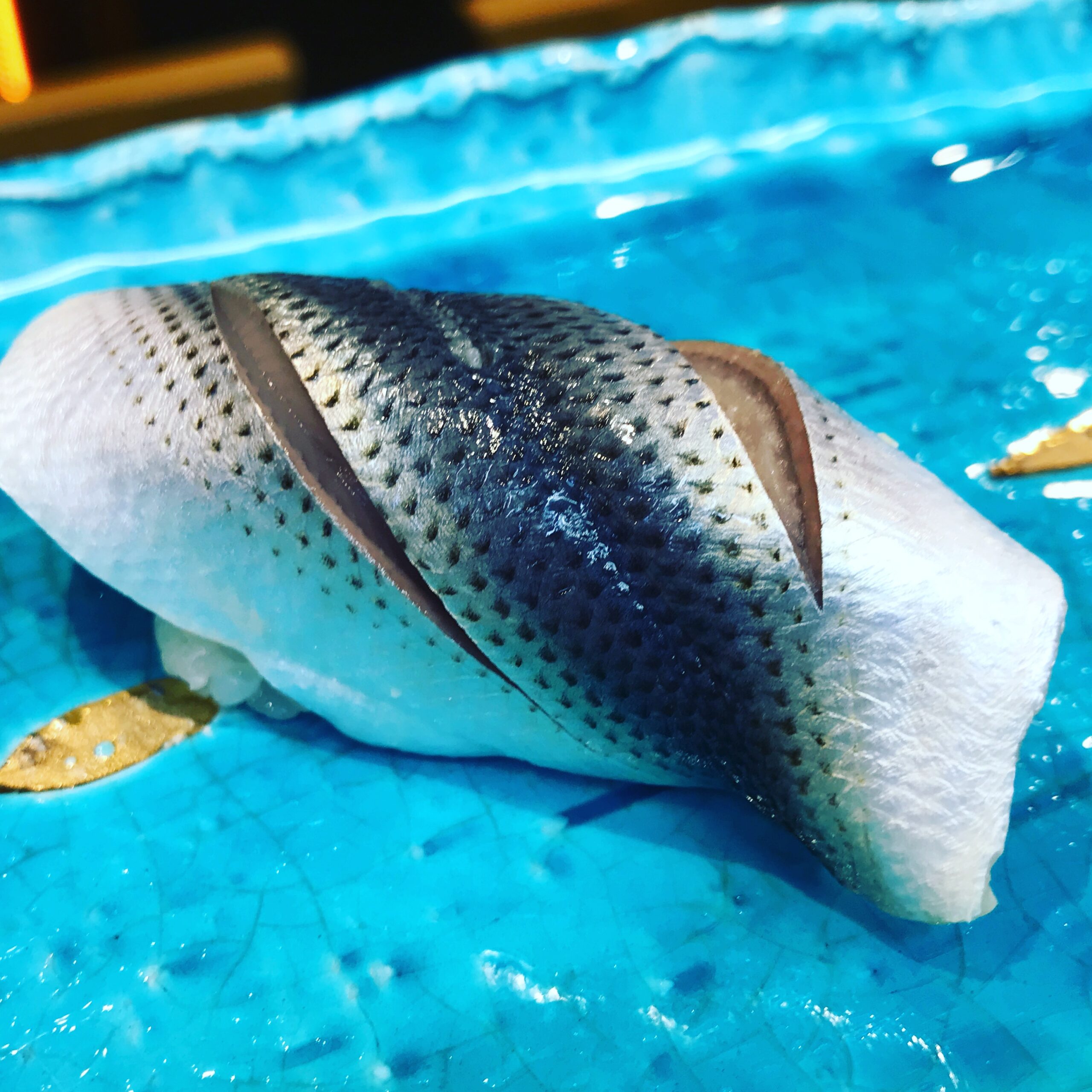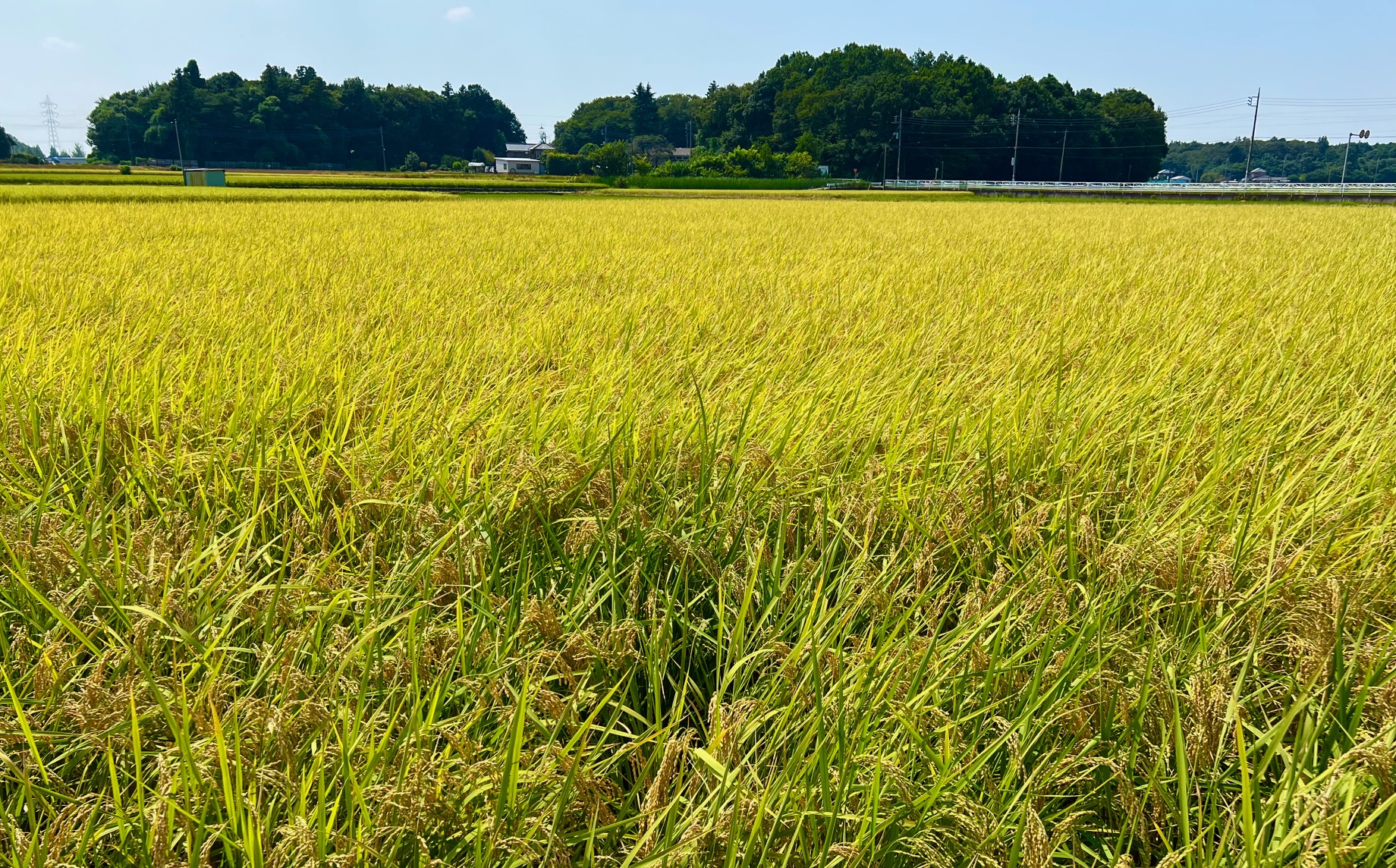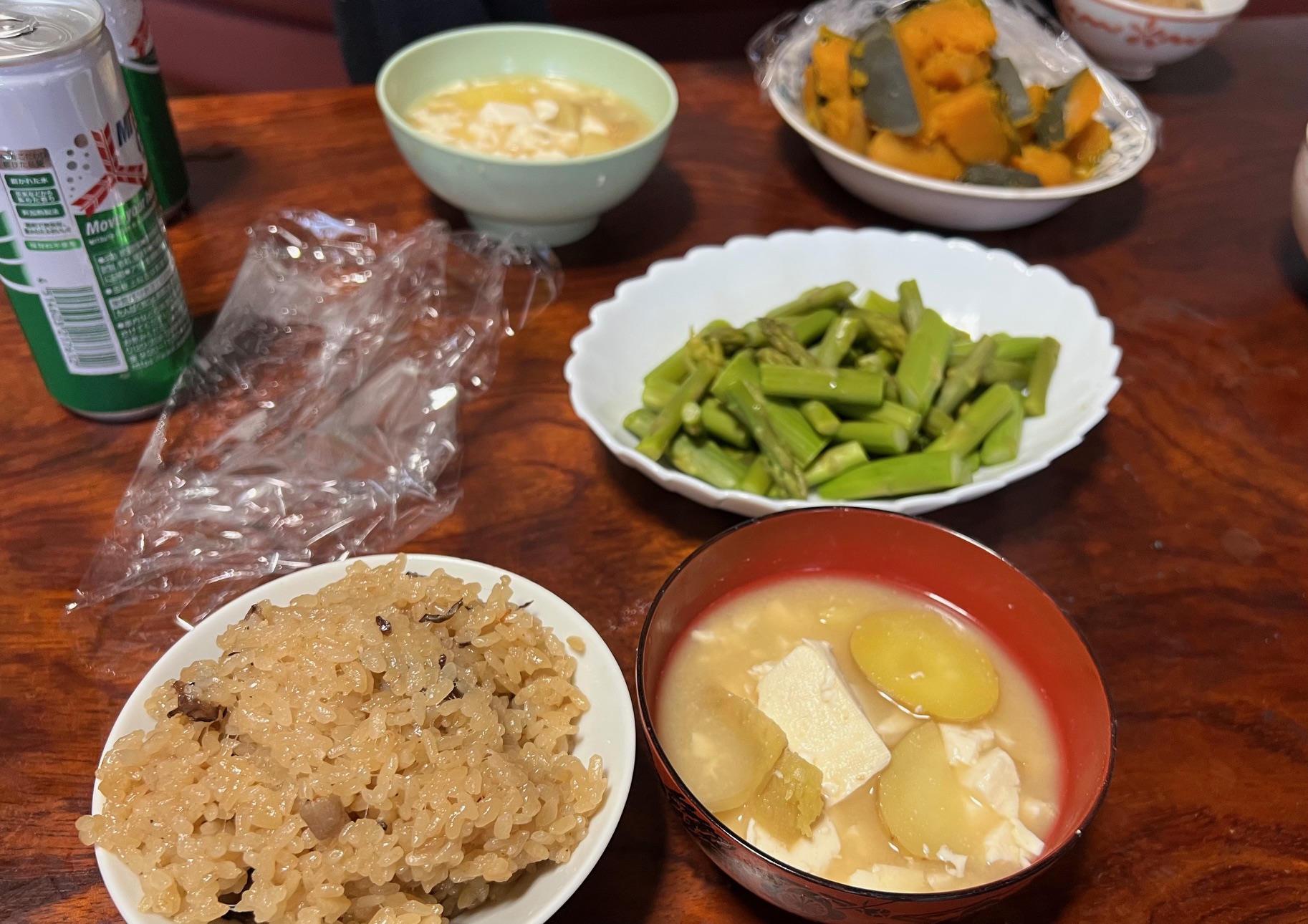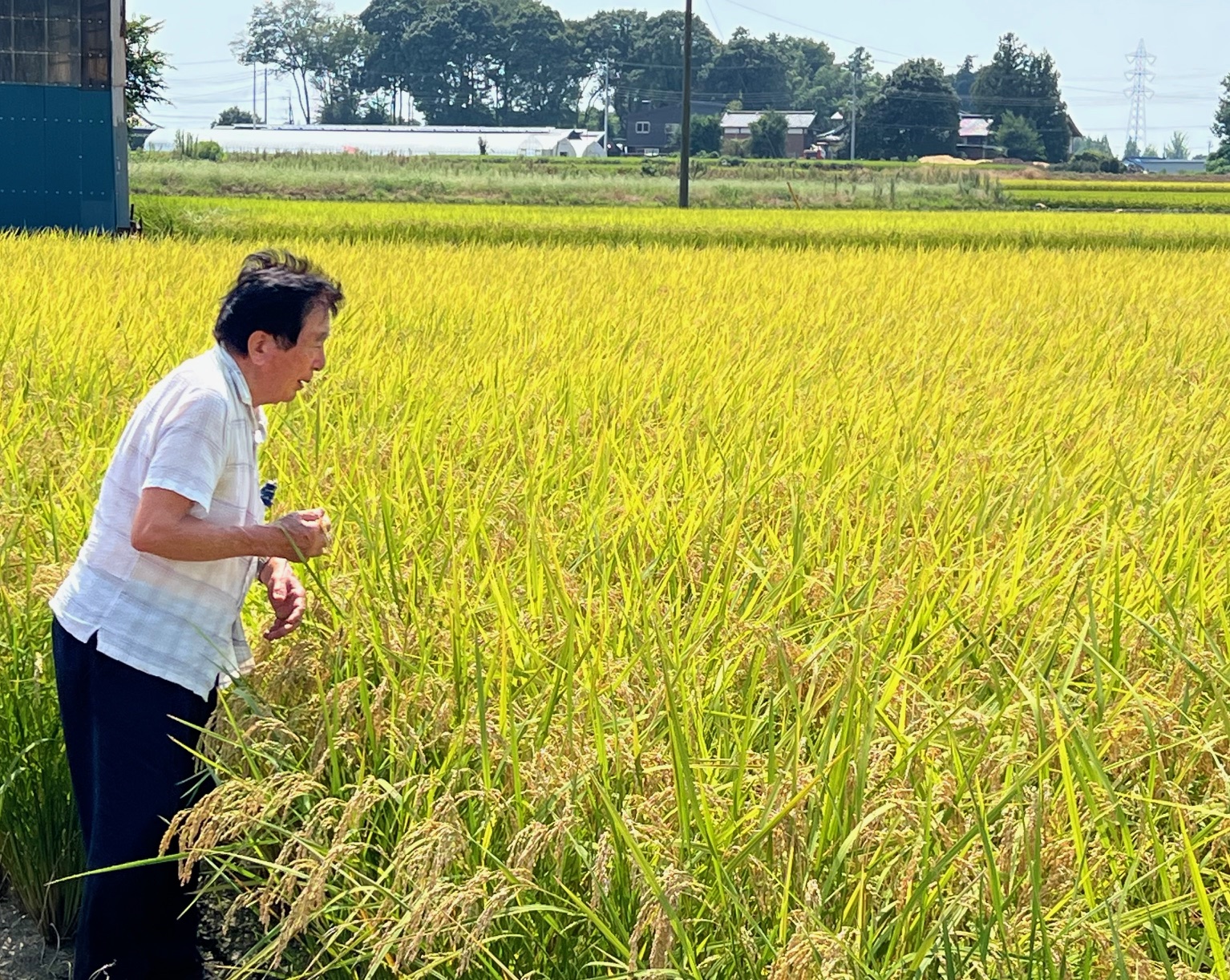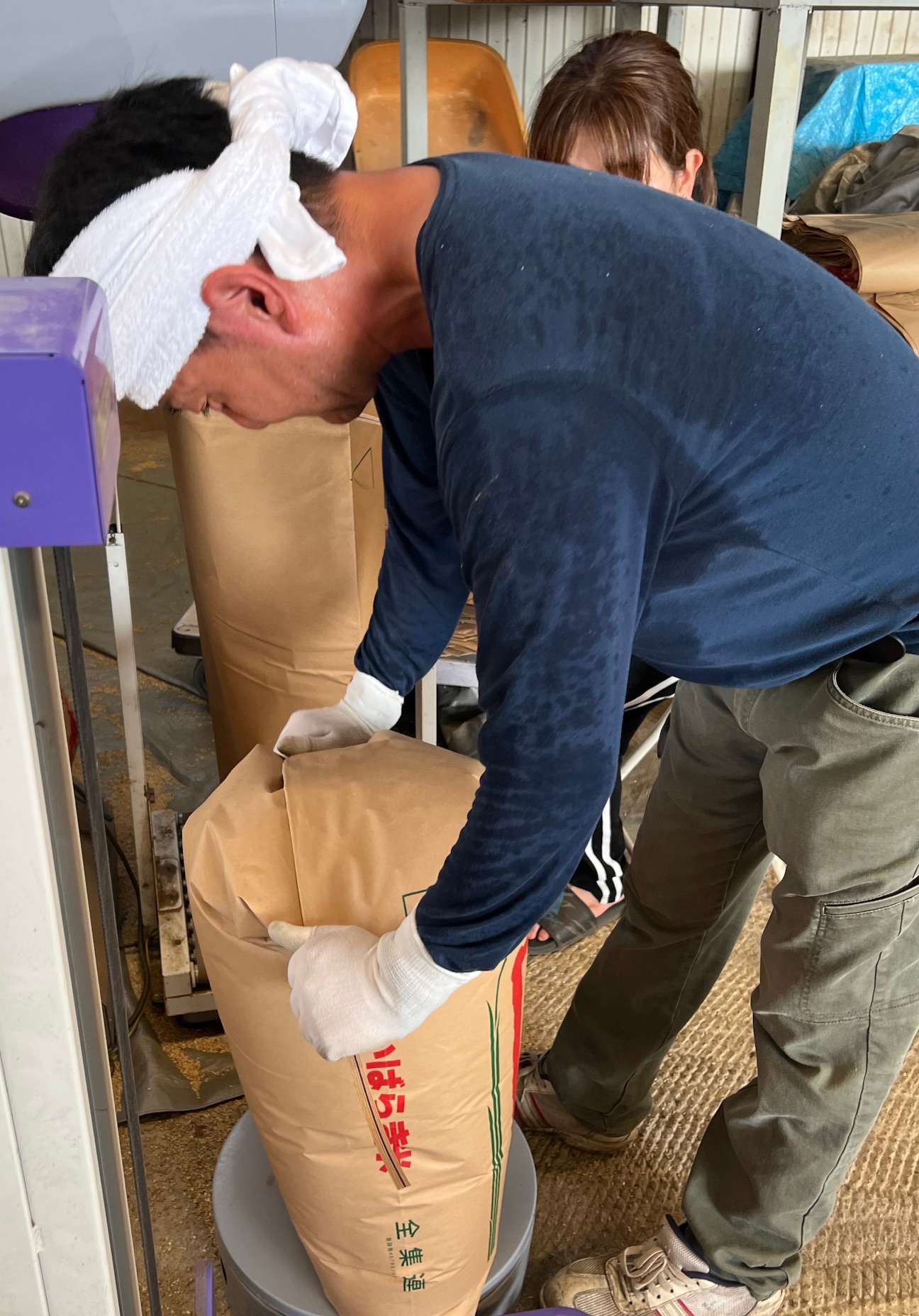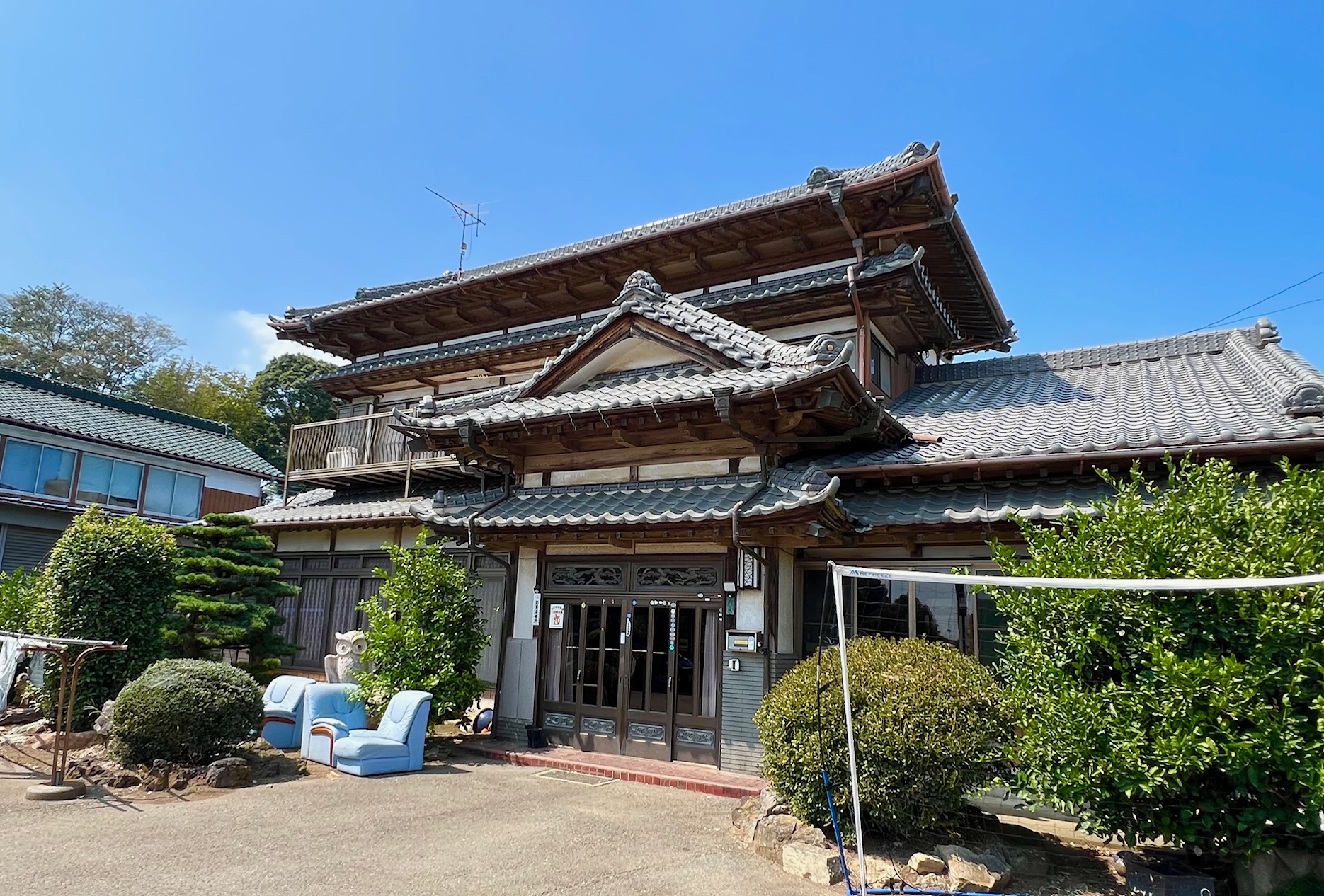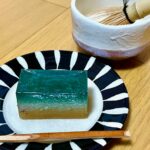It is the rice that Yahata Sushi is proud of.
The current Hachiman Sushi’s shari recipe was inherited from the fourth generation.
In the past, it was more and more salty, but more than 50 years ago, the salt has been reduced to less than half of what it was before, and it has come to this day.
So even after eating Hachiman Sushi’s sushi, you don’t often have a dry throat due to excessive salt, right?
And as I introduced before, the rice is made by my fifth uncle in Furukawa City, Ibaraki Prefecture.
It is also grown using well water in dedicated rice fields.
In addition, let’s try not to use pesticides as much as possible.
On Sunday in late August, I visited the rice field in the middle of mowing.
My uncle who is doing it is 88 years old, born in 1937.
Normally, the harvesting is done in 2 days, but on this day, the rice harvested the day before was not processed by the threshing machine, so the harvest was carried over to the next day.
Thanks to that, I was able to see the golden ears of rice up close.
When I went to the rice field that had drained the water, the scenery spread out in front of me as the saying goes, “The more fruitful it is, the ears of rice that droop on the rice.”
Well, it is the grandson and his wife who dry the harvested rice and pack it in bags (because their parents and fifth cousins and his wife passed away due to Corona).
The way they pile up each bag of carefully bagged rice while sweating is spectacular and at the same time, your head is low.
You store this rice in a large refrigerator.
On this day, I only saw the work of bagging the harvested rice, but I can clearly see how difficult it is to grow it so far.
For a sushi restaurant, rice is life.
Knowing that this is how delicious shari is made, a new feeling of gratitude arose.
And making use of this is our mission.
I will continue to hold delicious sushi from now on so that I will not be ashamed of making precious rice.

